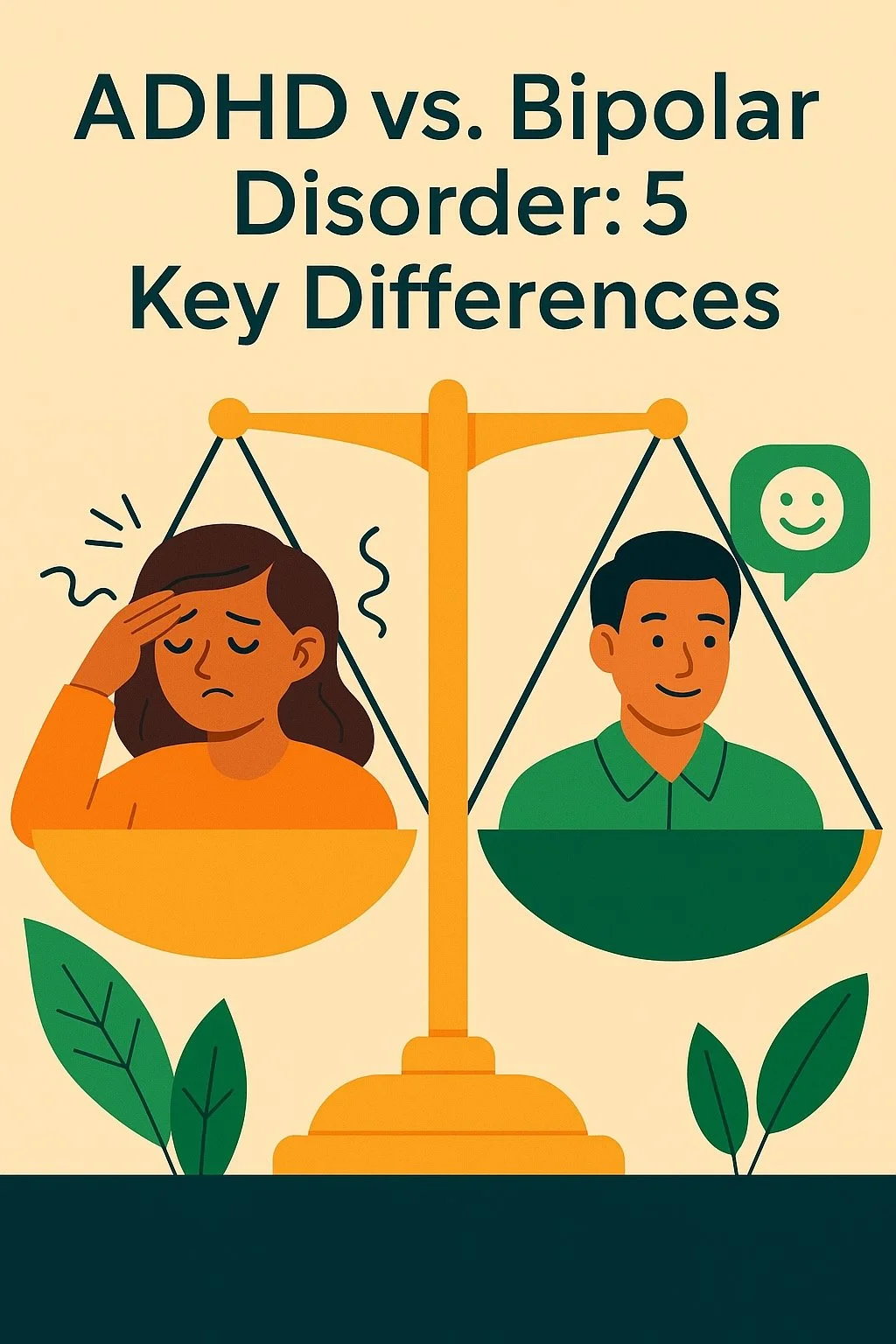ADHD vs. Bipolar Disorder: Why Diagnosis Isn’t Always Straightforward
If you’ve ever wondered whether you have ADHD, bipolar disorder, or maybe even both, you’re not alone.
These two conditions often share overlapping symptoms—like impulsivity, distractibility, and emotional reactivity—making it hard to tell where one ends and the other begins.
Getting the right diagnosis is essential, because it guides medication choices, therapeutic approaches, and the long-term roadmap of your care.
As a psychiatric nurse practitioner (PMHNP), I regularly work with patients in Oregon who arrive with a mix of symptoms—and a lot of confusion.
Let’s explore how these conditions differ, why they can be hard to tell apart, and what the diagnostic process should really look like.
What ADHD and Bipolar Disorder Have in Common
Both ADHD and bipolar disorder can involve:
Mood instability
Risk-taking or impulsive behaviors
Difficulty focusing
Disrupted sleep
Irritability or emotional reactivity
These shared traits can muddy the waters, especially in adults who were never diagnosed as children or who are currently under stress.
How are ADHD and Bipolar Disorder Different?
ADHD is more chronic and pervasive, while bipolar symptoms tend to come in episodes that feel out of proportion to external events.
Why Diagnosis Can Be Tricky
Patients often present during mood instability, making it hard to tell if attention issues are chronic (ADHD) or episode-related (bipolar).
Trauma, anxiety, and sleep disorders can mimic or exacerbate both conditions.
ADHD and bipolar disorder can co-exist — and when they do, each one affects how the other is expressed and treated.
That’s why diagnosis isn’t about checking boxes—it’s about understanding timing, context, and history.
My Approach to Diagnostic Clarity
As part of my psychiatric evaluation, I take the time to explore:
Your developmental history and lifelong symptoms
Family history of mood or attention disorders
The timeline and triggers of your symptoms
Sleep, energy, and behavior patterns across weeks—not just one day
Response to previous medications, if any
If needed, I may also recommend psychological testing, sleep evaluations, or collaboration with therapists and others for further insight.
Why This Matters for Treatment
Treating ADHD as bipolar—or vice versa—can be harmful:
Stimulants may worsen mania if bipolar disorder is unrecognized.
Mood stabilizers won’t address executive dysfunction in untreated ADHD.
Getting it right means we can build a treatment plan that actually works—not just suppresses symptoms.
Let’s Work Through It Together
If you’re unsure whether you’re dealing with ADHD, bipolar disorder, or both, I’m here to help. My role as a PMHNP is not only to prescribe, but to listen carefully, understand the full picture, and guide you toward clarity.


